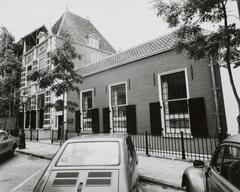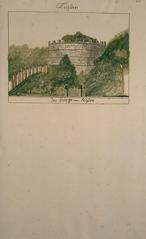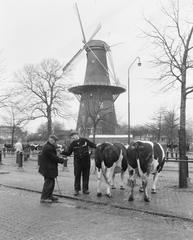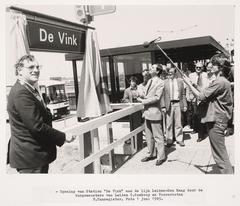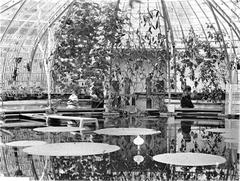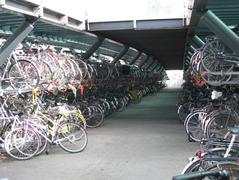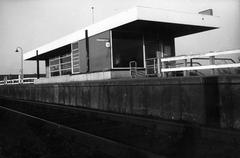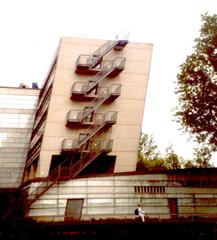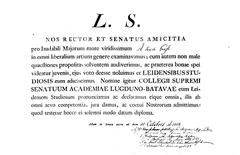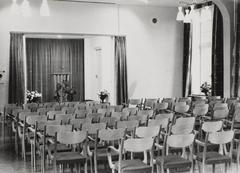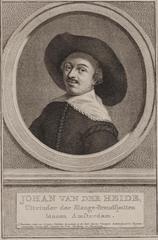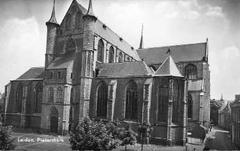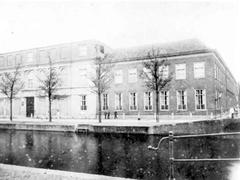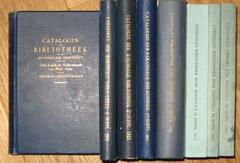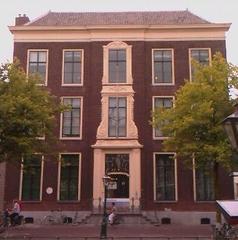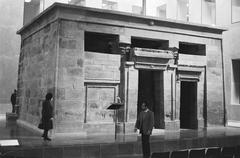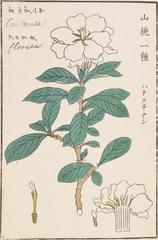
Wouterenbrug Leiden Netherlands: Visiting Hours, Tickets, and Historical Sites Guide
Date: 04/07/2025
Introduction: History and Cultural Significance of Wouterenbrug
Wouterenbrug is a key historic bridge in Leiden, Netherlands, renowned for its role in the city’s extensive canal heritage and urban development. Situated in the vibrant Vreewijk district, Wouterenbrug connects important neighborhoods across the Trekvliet canal and supports Leiden’s celebrated network of over 80 bridges. The bridge dates back to the late 19th century, reflecting the city’s expansion and its enduring relationship with waterways for commerce and daily life (hollymelody.com; Wikipedia).
Unlike some of Leiden’s ornate stone bridges, Wouterenbrug features a functional cast-iron central pier with a wooden deck, exemplifying practical Dutch engineering adapted to the region’s soft, waterlogged soils. Open to the public at all times with no entrance fees, the bridge is fully accessible for pedestrians, cyclists, and those using mobility aids. Wouterenbrug offers picturesque canal views and is conveniently located near major attractions such as Burcht van Leiden, Hortus Botanicus, Museum De Lakenhal, and Naturalis Biodiversity Center. Its scenic setting makes it especially popular with photographers during golden hour (routesandrevelations.com; Dreams Abroad).
This guide provides a comprehensive overview of Wouterenbrug’s history, visitor information, accessibility, and practical tips, helping you make the most of your experience in one of Leiden’s most beloved canal bridges (facts.net; hollandbeyond.com).
Contents
- Origins and Early Development
- Architectural Features and Construction
- Role in Urban Mobility
- Visiting Wouterenbrug: Practical Information
- Visiting Hours and Accessibility
- Travel Tips
- Nearby Attractions
- Photography Spots
- Historical and Cultural Context
- Bridge Structure and Surroundings
- Best Times to Visit
- Accessibility for All
- Events and Seasonal Highlights
- Combining with Other Attractions
- Frequently Asked Questions (FAQ)
- Summary and Visitor Recommendations
Origins and Early Development
Wouterenbrug is a characteristic part of Leiden’s canal system, bridging Rijn en Schiekade and Jan van Goyenkade in the Vreewijk area. Its origins, dating to the late 19th century, coincide with periods of rapid urban growth and the expansion of residential neighborhoods like Vreewijk. The bridge’s strategic location reflects Leiden’s historical reliance on canals for trade, transport, and daily life (hollymelody.com).
Initially serving as a jaagbrug (towpath bridge) for barges, Wouterenbrug continues to support the city’s dominant modes of transport—walking and cycling (holland.com).
Architectural Features and Construction
Wouterenbrug’s design is utilitarian, with a cast-iron central pier and a wooden deck, built to meet the demands of heavy daily use. Its construction exemplifies Dutch expertise in building durable, practical infrastructure for soft, water-rich environments (routesandrevelations.com).
As of summer 2025, the bridge is undergoing scheduled maintenance and deck replacement, coordinated with the adjacent Jaagbrug. At least one bridge will remain open at all times, ensuring continued access for locals and visitors (sleutelstad.nl).
Role in Urban Mobility
Located on a major cycling route between Leiden Zuidwest and the city center, Wouterenbrug is vital for non-motorized city travel. Leiden’s network of almost 90 bridges and 28 kilometers of canals means cycling and walking are the most efficient ways to explore (routesandrevelations.com). During maintenance, clear detour signage keeps disruptions minimal (sleutelstad.nl).
Visiting Wouterenbrug: Practical Information
Visiting Hours and Accessibility
- Open: 24/7, year-round. No entrance fees or tickets required.
- Maintenance Notice: Summer 2025 will see partial closures for deck replacement. At least one bridge (Wouterenbrug or Jaagbrug) will always remain open.
- Accessibility: Flat, step-free deck suitable for pedestrians, cyclists, wheelchairs, and strollers.
Travel Tips
- Cycling: Leiden is highly cycle-friendly; bike rentals are widely available.
- Plan Ahead: Check local websites for real-time maintenance updates.
- Weather: Bring a rain jacket, as Dutch weather can be unpredictable.
Nearby Attractions & Photography Spots
- Burcht van Leiden: Medieval fortress with city views.
- Hortus Botanicus: One of the world’s oldest botanical gardens.
- Museum De Lakenhal & Naturalis Biodiversity Center: For art, history, and science lovers.
- Canal Views: Wouterenbrug offers ideal photo opportunities during sunrise and sunset.
Historical and Cultural Context
Wouterenbrug is not only a physical crossing but a symbol of Leiden’s layered history and adaptive urban planning. The city’s canal system, a legacy of the Dutch Golden Age, remains central to local identity. The bridge’s continued maintenance and restoration underscore Leiden’s commitment to preserving historic infrastructure for modern needs (facts.net).
Bridge Structure and Surroundings
Wouterenbrug features a wooden deck supported by a cast-iron pier, with modest railings for safety. Its surroundings are characterized by cobblestone streets and traditional Dutch canal houses. The bridge connects lively neighborhoods and is close to shops, cafés, and market streets (The Tourist Checklist; Dreams Abroad).
Best Times to Visit
- Spring & Summer: Enjoy lush greenery, lively canals, and vibrant city events.
- Autumn: Fewer crowds, golden foliage, and reflective waters.
- Winter: Occasionally, the canals freeze, offering unique views and, sometimes, ice skating.
- Golden Hour: Early morning and late afternoon are best for photography.
Accessibility for All Visitors
- Surface: The bridge and adjacent streets are paved, though some cobblestones may be uneven.
- Wheelchair Access: The bridge itself is accessible; assistance may be needed on nearby cobblestones.
- Assistance: Many local businesses and attractions are willing to help; contact ahead for arrangements.
Events and Seasonal Highlights
- King’s Day (April 26): The area is lively with music, markets, and festivities (Shirshendu Sengupta).
- Bloemencorso (April): Flower Parade floats and decorations line the bridges and canals.
- December: Holiday lights and markets create a festive atmosphere.
Combining Wouterenbrug with Other Attractions
Thanks to its central location, Wouterenbrug is an ideal starting point for city exploration:
- Burcht van Leiden: A historic fortress with panoramic views.
- Hooglandse Kerk and Pieterskerk: Impressive churches nearby.
- De Valk Windmill Museum: A working windmill and museum.
- Singelpark: A 6.5 km green belt encircling Leiden’s core (Netherlands Tourism).
Frequently Asked Questions (FAQ)
Is Wouterenbrug accessible during maintenance?
Yes, at least one bridge will remain open during the 2025 maintenance period.
Are tickets or reservations required?
No, Wouterenbrug is public and free to access.
Are there guided tours?
While no tours focus solely on Wouterenbrug, many walking and cycling tours in Leiden include it.
Is the bridge wheelchair accessible?
Yes, the bridge is flat and step-free; some cobblestone areas may require assistance.
What are the best times for photography?
Early morning and late afternoon provide the best lighting.
Summary and Visitor Recommendations
Wouterenbrug is more than a simple crossing—it is a living testament to Leiden’s historical evolution and sustainable urban vision. It remains a crucial pedestrian and cycling link, offering scenic views and easy access to many of the city’s best attractions. The bridge’s accessibility ensures visitors of all mobility levels can enjoy its tranquil beauty and rich history (sleutelstad.nl; holland.com). Seasonal highlights, lively festivals, and proximity to landmarks like the Burcht van Leiden and Hortus Botanicus make Wouterenbrug a must-see for anyone exploring Leiden (Wikipedia; routesandrevelations.com).
To enhance your visit, consider timing your trip around local events, using navigation apps like Audiala, and joining guided tours for deeper historical insights. Immerse yourself in Leiden’s picturesque canal culture—Wouterenbrug is an essential stop for travelers seeking authenticity and charm (facts.net; Dreams Abroad).
Sources and Further Reading
- Wouterenbrug in Leiden: History, Visitor Info, and Cycling Routes, 2025 (hollymelody.com)
- Discover the Netherlands: Leiden (holland.com)
- Wouterenbrug Maintenance Update, 2025 (sleutelstad.nl)
- Guide to Leiden Visit (routesandrevelations.com)
- Wouterenbrug Leiden: Visiting Hours, Tickets, and Historical Insights (Wikipedia)
- Leiden Facts (facts.net)
- Leiden Tourism Overview (hollandbeyond.com)
- A Guide to Leiden Netherlands (Dreams Abroad)
- Things to Do in Leiden (The Crazy Tourist)
- Leiden Attractions and Tours (The Tourist Checklist)
For photos, maps, and interactive resources, refer to official Leiden tourism websites. Visual media and interactive maps will be added by the content team as per site standards.


